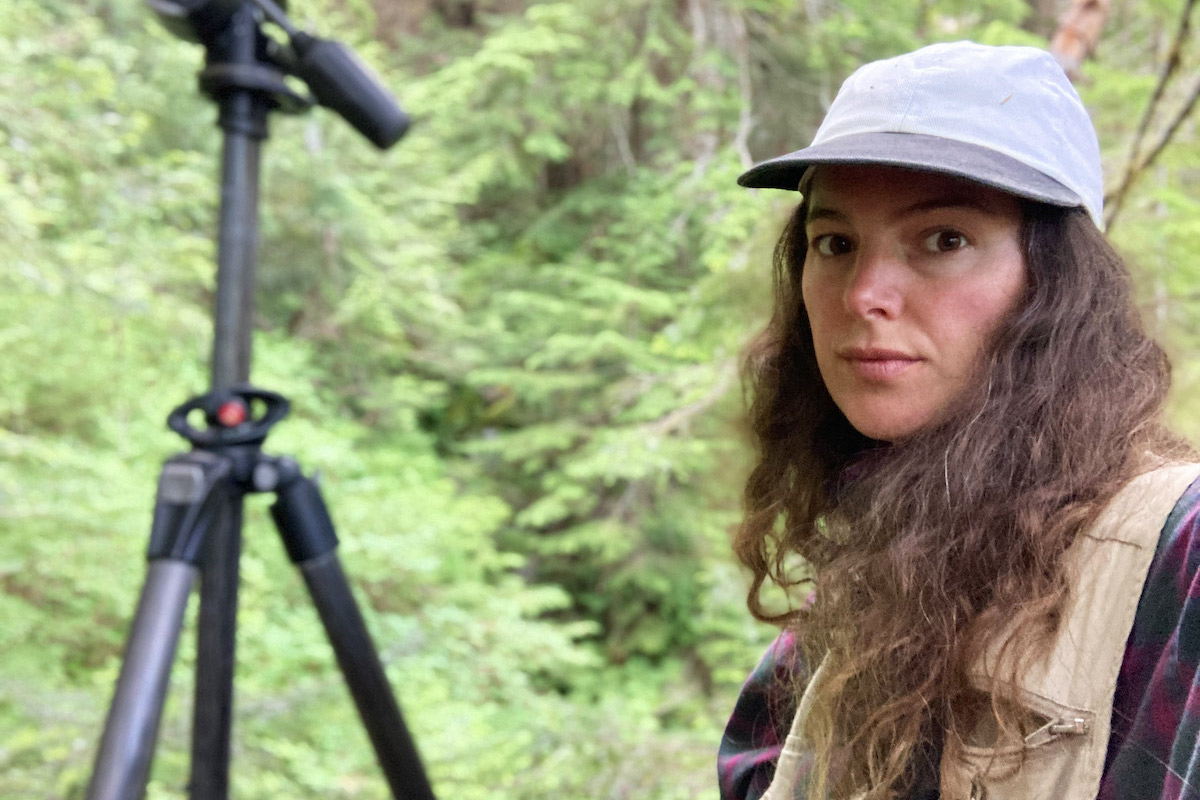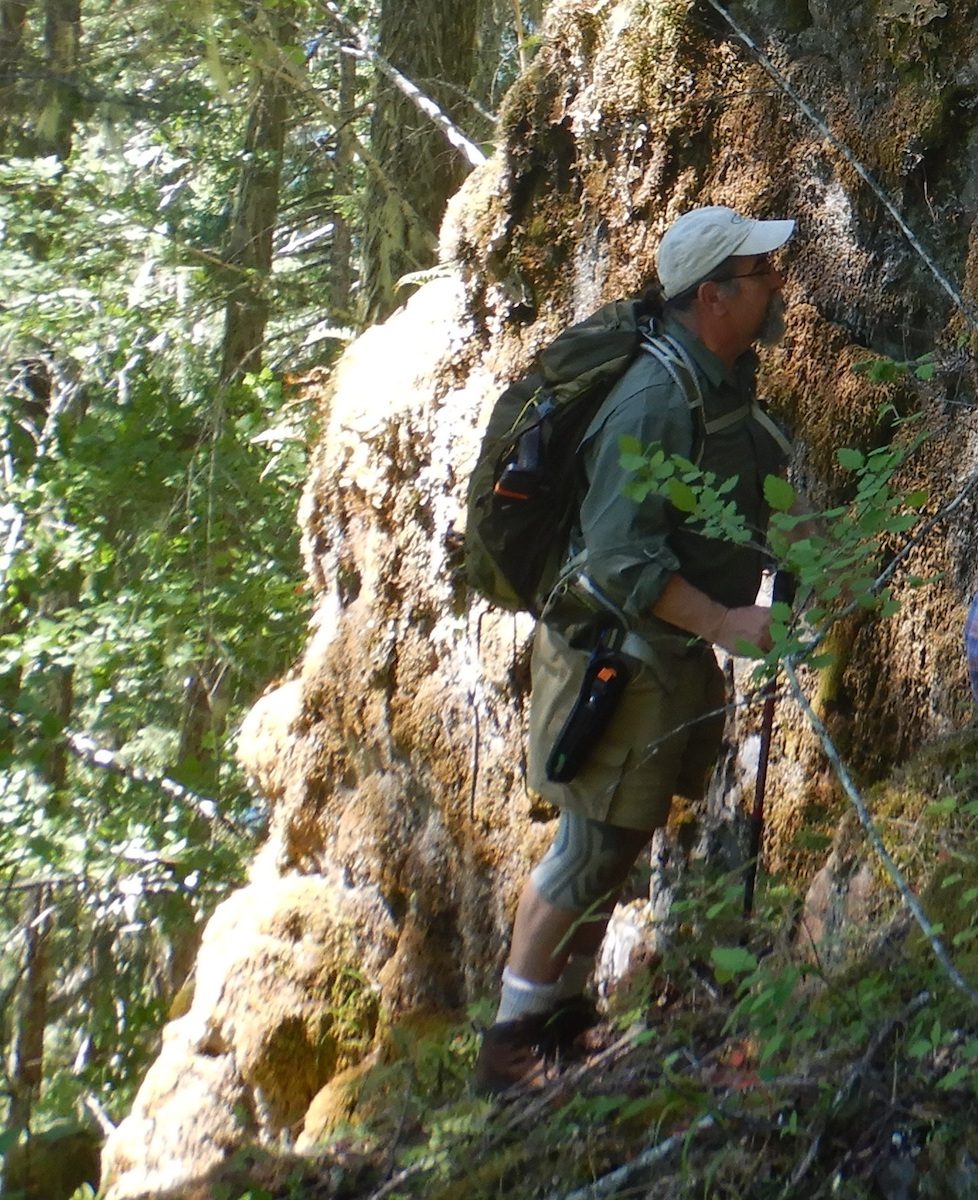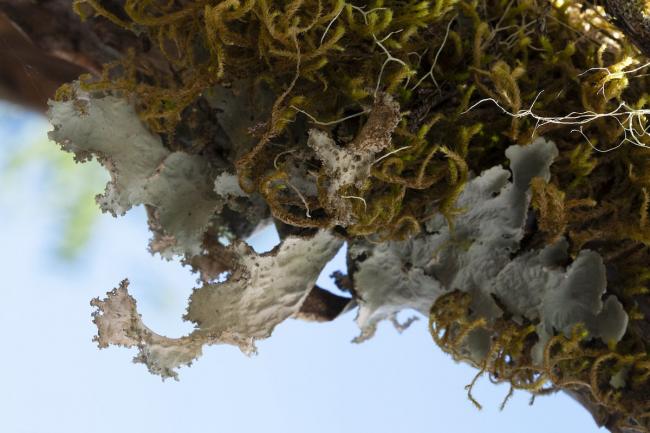The drama unfolding at Fairy Creek is a story of very big things — mammoth trees of great age, a forest that could, according to scientists, date back untouched to the Ice Age. Then there are the protests, surpassing Clayoquot Sound’s as the largest act of civil disobedience in Canadian history. Not to mention the outsized and violent response of the RCMP, which has had more than 90 complaints made to the Civilian Review and Complaints Commission, the federal watchdog that holds RCMP to account.
If that’s not big enough, many call Fairy Creek not just a War in the Woods but a fight for the planet itself: against climate change, and those forces of industry and government that refuse to address the crisis adequately as the planet heats and burns.
Yet, according to scientists I spoke to this week, we humans — so prone to the big picture — may be looking at things through the wrong lens. If we want to save the rainforest and get closer to understanding climate change, we also need to look to the tiny, tenacious and incredibly complex organisms that exist within Fairy Creek’s forests.
The lichens.

One rare species, the Old Growth Specklebelly Lichen, discovered recently around Fairy Creek by artist and citizen scientist Natasha Lavdovsky, could hold keys to stopping the logging — and show us how nature creates wet zones that halt wildfires, protection from the worst ravages of climate change.
What people are reading
Her discovery is, in itself, like something from a fairy tale.
A Princeton-educated artist and citizen scientist, Lavdovsky went into the Fairy Creek rainforest last May, setting up near the “Heli Camp” protest camp to record the soundscape lichens both create and live inside. She recorded marbled murrelets in ancient trees, red-legged tree frogs in the roadside ditch, tent flaps unzipped as protesters rose at dawn to block the road. One afternoon out walking, she noticed a fallen yellow cedar, roots weakened by the logging road. As she came closer, she saw, in its exposed canopy, masses of the rare Specklebelly lichen.

For Lavdovsky, it was like finding gold.
“It was beautiful,” she told me. “Blue on top, pale peach below, with sinuous edges and tiny white speckles. A marvel.”
A rare species of lichen recently discovered around Fairy Creek could hold keys to stopping old-growth logging in the area — and show us how nature creates wet zones that halt wildfires. #FairyCreek #Wildfires #OldGrowth - Twitter
Once she’d seen it, her eyes, as though cleansed, began to see it everywhere — on trees beside a tree-sit, in groves almost completely swathing trunks. Scientist Loys Maingon, a fresh water expert and research director for Strathcona Wilderness Institute, believes she may have discovered B.C.’s — and Canada’s — largest population of this rare species. “It’s not often found,” he said. “There are only seven locations in B.C., and in some locations, only one or two individual plants. But she found one population with about 600 individuals.”

Bill Jones, an elder with Pacheedaht Nation, whose ancestral lands encompass the area and who authorized biologists to survey it, described Lavdovsky as “very excited” when she came to speak to him about the find. “I told her, we’d better find a way to protect it,” he said. “It doesn’t grow in any place except that special environment.”
Yet almost all of the Specklebelly found thus far in the Fairy Creek area lies in Cut Block 8022, slated for imminent logging (see map). It’s also directly in road-building paths, despite the fact that its rarity dictates it should have a 200-metre buffer zone around each tree on which it’s found. Even BC Timber Sales’ guidelines specify this protection buffer.

As well, according to the federal Species at Risk Act, which blue-lists the vulnerable lichen, an immediate inventory ought to be done to chart, monitor and protect the species.
If the provincial government fulfils its duty as a protector of endangered species, this lichen’s discovery could signal a David and Goliath moment. A lichen that could have the power to stop Teal-Jones, the logging company operating in Fairy Creek, in its tracks. But so far, the B.C. government is not fulfilling that role, and is, in fact, the only provincial government, besides Alberta, not to have created a legally binding framework to protect rare species.

So right now, the only real protection for the lichen are the protesters blocking the road.
For Lavdovsky, the Specklebelly, as well as being beautiful and of importance “as a being in its own right,” is also a metaphor for community. Each Specklebelly lichen is a complex of multiple beings, she explained, consisting of fungus, algae, yeast and cyano-bacteria.
“They’ve figured out how to live together,” she said, taking nutrients out of thin air, disbursing these to the mother tree. “Unlike colonizing humans,” she added, “who take from the land of Indigenous Peoples and put pollutants into the air.”
There’s a further superpower in this lichen: In this time of wildfires, with tinder-dry forests, there is much to be learned from how lichens cool and regulate temperature.
“Lichens are only unsaturated 30 per cent of the time,” Maingon explained. The remaining 70 per cent of the time they expand to absorb water. This allows them to play an outsize role in cooling the environment. By cutting down the old-growth forest, we interfere with these intricate cooling systems. This increases wildfires and climate heating.
“An old-growth forest is completely different from a second-growth forest,” Maingon said. With an old forest, “its nitrogen is fixed by lichens and mosses, while a newer forest fixes its nitrogen with alder and scotch broom. They do their work, but they don’t hold water.”

The upshot? Fewer spongy old-growth forests — far more wildfires.
As for clearcuts, Maingon explained they increase the surrounding temperature even more profoundly.
Then there are the “flying rivers” created by lichen-rich old forests: masses of foggy air that pass across the province, watershed by watershed, bathing the interior. “Water that originates in Pacific Coastal forests is cycled along the boreal forest and across the Prairies,” he explained. “If our forest pumps stall because they are damaged, Alberta, Saskatchewan and Manitoba feel the drought, much as we saw this year.
“These complex forest systems are beyond any engineering model for how they capture and produce water,” said Maingon. “Once again we (humans) are destroying things we don’t even understand.”
As for the other “big story” unfolding at Fairy Creek, I asked Lavdovsky what she thought of the protesters facing off right now against the RCMP.
“Most people there have a reverence for the beings that live in the forest,” she said. “They (the blockaders) collaborate, they work together. They thrive by creating a community of support. Actually,” she added, “they’re a lot like the lichen.”
From Natasha Lavdovsky, that’s high praise indeed.
Shaena Lambert is reporting on Fairy Creek for Canada's National Observer. She is the award-winning author of the novels Petra and Radiance and the short story collections Oh, My Darling and The Falling Woman. Read more about her work at shaenalambert.com.


